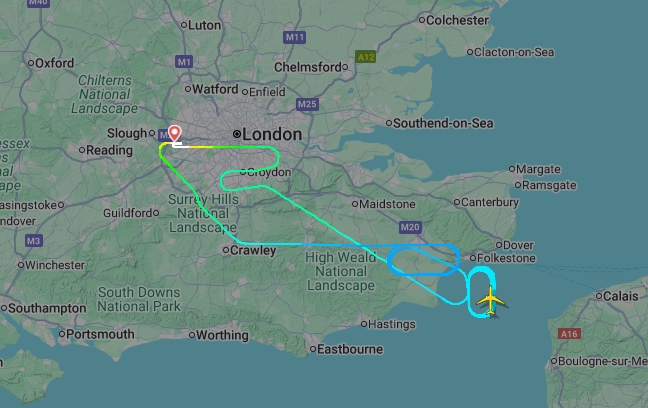British Airways flight BA35, a Boeing 787‑8 Dreamliner, diverted back to London Heathrow on Sunday shortly after departure, following a flap-system anomaly. Departing at 1:16 pm local time after a 36‑minute delay, the aircraft circled above the Strait of Dover to offload fuel and safely landed back at Heathrow, with all 270 passengers and crew disembarking into normal airport procedures.
Aviation experts note that flap adjustments are critical for maintaining lift and control during takeoff and landing. According to tracking data, BA35 maintained altitude near 9,000 to 15,000 feet as the crew held pattern for over an hour, dumping fuel to give the aircraft a safe landing weight.
British Airways confirmed the diversion was a standard safety precaution in response to a technical alert, emphasising that no emergency was declared. Technical teams are now inspecting the flap mechanism to resolve the issue. Passengers have been offered rebooking and accommodation assistance.
British Airways Chennai flight returns to Heathrow due to technical snag
The aircraft involved, registration G‑ZBJG, entered service in 2014 and serves on one of the airline’s key long-haul South Asia routes. The diversion caused disruption to Heathrow’s operational rhythm as the aircraft occupied a Terminal 5 gate, affecting subsequent departures. British Airways has deployed reserve aircraft to sustain its London–Chennai schedule.
This incident occurs in the shadow of a prior flap‑related scare in the 787 fleet and follows a high-profile Boeing 787‑8 crash in mid‑June, underscoring the importance of flap‑system integrity. Airline engineers and regulators are expected to scrutinise component performance and maintenance stages across the widebody fleet.
Flap malfunctions, while rare, have the potential to compromise aircraft handling. Industry safety protocols mandate that pilots hold pattern for fuel dumping prior to landing when system alerts emerge and preclude immediate descent. Boeing has maintained that the 787 platform demonstrates robust redundancy, though each incident renews calls for thorough systems review.
Passenger accounts conveyed relief at the calm and methodical in-flight handling. One traveller remarked on social media that crew maintained orderly control: the cabin remained composed under clear communication from flight deck announcements. This is consistent with aviation-industry assessments that commend crew professionalism in managing non-routine situations.
Collectors of flight tracks noted unusual circling patterns and fuel dump signatures over the Channel, triggering increased attention from aviation monitoring communities. Analysts emphasise that routine returns for technical alerts ultimately reinforce flight safety standards, even when they disrupt operations.
British Airways has rescheduled the Chennai flight using an alternate aircraft and ofreceiled logistical support to affected customers. Maintenance teams will likely dismantle and test the flap system before recertifying G‑ZBJG for service. The airline’s leadership has reiterated its safety-first mandate, stating that preemptive action—even when inconvenient—delivers trust and assurance to passengers.
The day’s unfolding further prompts reflection on the resilience of global long-haul connectivity. With summer travel surges underway, even a single aircraft diversion can ripple across schedules from Europe to South Asia. Heathrow’s capacity management framework is likely under review to accommodate such disruptions more seamlessly.




 Escalation in Israel–Iran Conflict Sparks Diplomatic Overtures Through Gulf Mediators
Escalation in Israel–Iran Conflict Sparks Diplomatic Overtures Through Gulf Mediators 